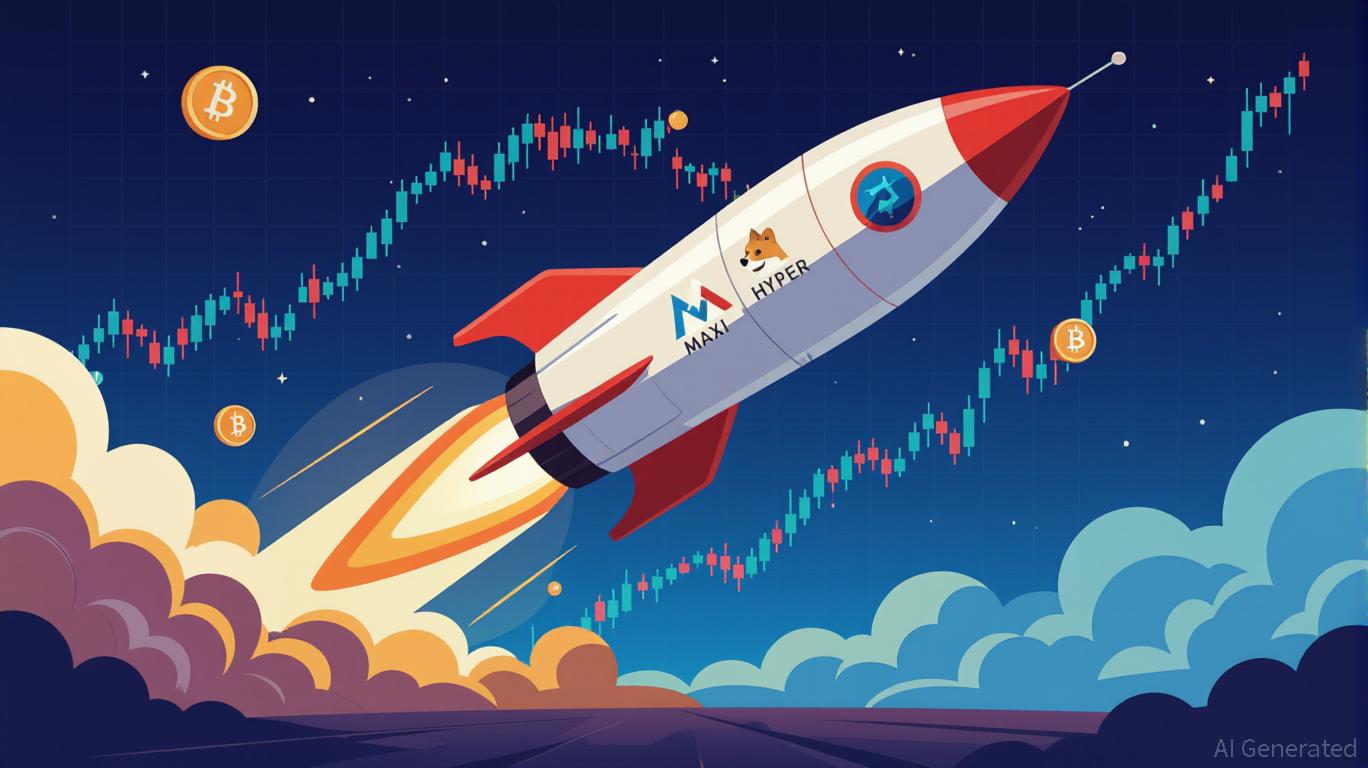Ethereum News Today: VersaBank Aims to Redefine Digital Banking with FDIC-Backed Tokenized Dollars
- VersaBank USA launches tokenized deposit pilot using USDVBs, FDIC-insured digital tokens backed by cash deposits. - Pilot tests thousands of low-value transactions on Algorand, Ethereum, and Stellar blockchains via proprietary platforms. - Bank seeks OCC non-objection to commercialize USDVBs, emphasizing compliance with BSA and OFAC regulations. - USDVBs differ from stablecoins by offering bank-issued interest and enhanced security through federal charter. - Program aims to establish VersaBank as a leade
VersaBank, a digital bank with $3.5 billion in total assets, has initiated a pilot program for tokenized deposits in the United States. The program, conducted by VersaBank USA, involves its proprietary Digital Deposit Receipts (DDRs), known as USDVBs, which represent U.S. dollars held in the bank. Each USDVB is a 1:1 digital token backed by actual cash deposits, offering a secure and compliant alternative to stablecoins. The pilot aims to validate the functionality, security, and operational integrity of these tokenized deposits within the U.S. regulatory framework.
The pilot will involve thousands of low-value transactions, starting with internal testing and progressing to limited external deployment with designated partners. USDVBs will be issued and managed using VersaBank’s proprietary platforms, VersaVault and VersaView, on the Algorand , Ethereum , and Stellar blockchains. The bank plans to obtain a non-objection from the Office of the Comptroller of the Currency (OCC) before commercializing the product. This regulatory approach aligns with VersaBank’s broader objective to ensure compliance with U.S. banking regulations, including the Bank Secrecy Act and Office of Foreign Assets Control requirements.
VersaBank USA’s USDVBs differ significantly from stablecoins, as they are issued by a federally chartered bank and are FDIC-insured. This structure allows them to earn interest and offers a higher level of security compared to private stablecoins, which are typically backed by third-party custodians. The pilot is expected to conclude by the end of 2025, after which the bank intends to launch the product as soon as possible. The initiative represents a critical step in VersaBank’s strategy to expand its digital offerings in the U.S., leveraging blockchain technology to enhance the efficiency and security of financial transactions.
The bank’s proprietary DDRs were developed in collaboration with law enforcement and are designed to provide a trusted alternative to stablecoins. This approach reflects the growing demand for digital assets that are both secure and compliant with traditional banking standards. VersaBank’s broader strategy includes not only the commercialization of USDVBs but also the expansion of its business-to-business digital banking services and cybersecurity solutions. The pilot program is part of the bank’s efforts to establish itself as a leader in the next generation of digital banking and financial services.
Industry analysis suggests that tokenized deposits could offer significant advantages in terms of efficiency and cost reduction for financial institutions and payment providers. By offering USDVBs, VersaBank aims to provide a scalable solution that enables other banks and financial businesses to enter the digital commerce space with minimal risk. The bank’s phased approach to testing and deployment, combined with its emphasis on regulatory compliance, positions it to potentially lead the market in tokenized deposit offerings in the United States.
VersaBank’s pilot program is part of a broader trend of financial institutions exploring blockchain-based solutions to improve transaction efficiency and security. The bank’s decision to leverage three major public blockchains—Algorand, Ethereum, and Stellar—highlights its commitment to interoperability and scalability. As the pilot progresses, the outcomes will likely influence regulatory perspectives and adoption rates for tokenized deposits across the financial sector.
Source:
Disclaimer: The content of this article solely reflects the author's opinion and does not represent the platform in any capacity. This article is not intended to serve as a reference for making investment decisions.
You may also like
The 2 Most Undervalued Altcoins Poised for Explosive Growth in Q4 2025
- Q3 2025 altcoin market shows optimism with institutional support and on-chain signals, highlighting Maxi Doge (MAXI) and HYPER as undervalued projects with disruptive potential. - Maxi Doge, an Ethereum-based meme coin with 1,000x leverage trading and 383% APY, raised $1.63M in presale, projecting 12.9x price growth by Q4 2025. - HYPER, a Bitcoin Layer 2 solution using ZK-rollups and SVM, aims to boost scalability and enable a $223B Bitcoin-native DeFi ecosystem, with $12.3M raised and 100x gain projecti

KindlyMD's $5B Equity Raise: A Strategic Bet on Bitcoin's Institutional Future
- KindlyMD raised $5B via ATM offering to buy up to 1M BTC, joining corporate giants like MicroStrategy and Tesla as major Bitcoin holders. - The strategy frames Bitcoin as an inflation hedge and treasury diversifier, citing historical outperformance over gold, stocks, and bonds. - Critics highlight risks: extreme price volatility, equity dilution, and regulatory uncertainties around crypto custody and taxation. - The move reflects broader institutional adoption, with top 100 public companies holding ~1M B

The Rise of USDC as a Global Payment Infrastructure: Strategic Partnerships with Mastercard and Finastra Signal a New Era for Stablecoins
- USDC's partnerships with Mastercard and Finastra are reshaping global cross-border payments through blockchain-based stablecoin settlements. - Mastercard enables EEMEA merchants to settle in USDC/EURC, reducing costs and settlement times in underbanked regions while expanding digital inclusion. - Finastra's GPP platform integrates USDC for banks, combining stablecoin efficiency with traditional workflows to mitigate FX risks across 50+ countries. - USDC's $65.2B circulation growth (90% YoY) reflects regu

The Evolution of Market Infrastructure and the Rise of Bitcoin ETFs in Institutional Portfolios
- 2025 institutional Bitcoin adoption reached a pivotal inflection point driven by regulatory clarity, infrastructure innovation, and macroeconomic factors. - U.S. CLARITY/GENIUS Acts and SEC in-kind redemption approvals created legal frameworks enabling $86.79B in Bitcoin ETF assets under management. - Secure custody solutions and hybrid settlement systems (e.g., SPACs) enabled institutions like Harvard to triple Bitcoin exposure to 8% of portfolios. - Macroeconomic tailwinds positioned Bitcoin as inflati
